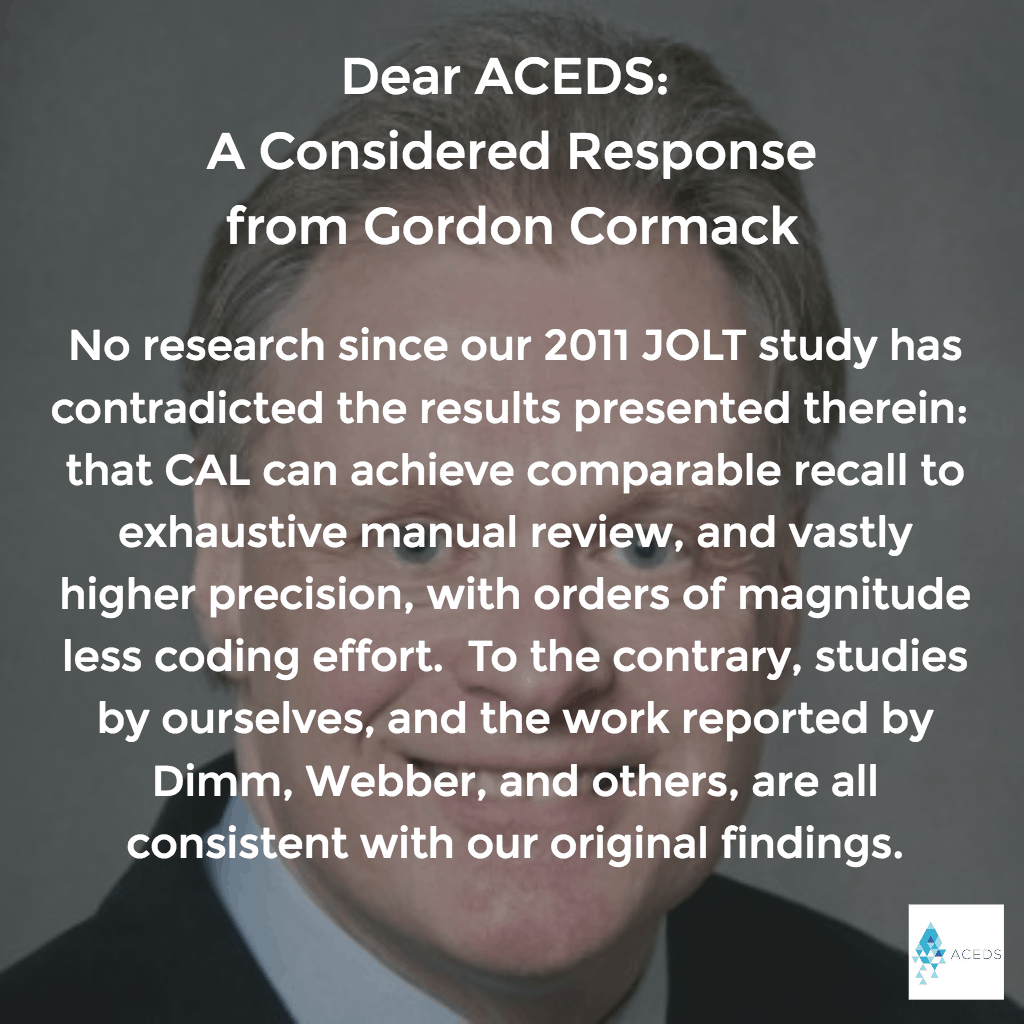ARCHIVED CONTENT
You are viewing ARCHIVED CONTENT released online between 1 April 2010 and 24 August 2018 or content that has been selectively archived and is no longer active. Content in this archive is NOT UPDATED, and links may not function.
An extract from a letter to ACEDS from Gordon CormackNOTE: The following letter is from Gordon Cormack, Professor with the School of Computer Science at the University of Waterloo in Ontario, Canada. Gordon is an information retrieval expert in the area of technology-assisted review in litigation, including influential works co-authored by Maura Grossman, a fellow researcher at the University of Waterloo. He wrote in response to yesterday’s ACEDS webinar, How Automation is Revolutionizing E-Discovery, which you can watch here.
Dear ACEDS,
Maura and I attended today’s ACEDS webinar entitled “Faster, Better, Cheaper: How Automation is Revolutionizing eDiscovery.” During the webinar presented by Bill Speros, Bill Dimm, and Doug Austin, we observed that the panel chose to rely on a selective reading of our five-year-old work in the Richmond Journal of Law and Technology (JOLT), which was incorrectly referred to as a “white paper.”
Overall, we believe that the webinar presented the false impression that we, and the courts, are resting on our laurels and that no legitimate empirical work has been done with respect to TAR. Maura and I have been—and continue to be—driven to advance the state of the art, to evaluate the technology, and to demonstrate its applicability to the real problems of eDiscovery and related fields.
In the webinar, Speros chose to elide the essence of the definition of TAR from both our 2011 JOLT and 2013 Federal Courts Law Review definitions: “the computer codes the remaining documents in the collection for responsiveness (or privilege” [JOLT article, at page 4], and “extrapolates those judgments to the remaining Document Collection” [Grossman-Cormack FCLR Glossary, at page 32].
Dimm, on the other hand, failed to note that the “UW”method tested at TREC 2009 was in fact Continuous Active Learning (CAL), later dubbed “TAR 2.0” by Catalyst and others. It is my work with Maura [at SIGIR 2014; see http://dx.doi.org/10.1145/2600428.2609601] that demonstrated CAL to be superior to other TAR methods.
Read the complete article at A Considered Response from Gordon Cormack






















